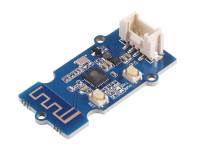ESP8266: Your interface to the Internet of Things
Hardly any microcontroller has turned the maker scene upside down in recent years as much as the ESP8266 module, which is also known as NodeMCU. At first glance at the compact developer board, a visual similarity to the well-known Arduino Nano microcontrollers is striking. And a closer look at the technical parameters also makes it easy to make a direct comparison with the Nano. The special feature of the ESP8266, optionally also the WEMOS D1 mini, is the integrated IoT interface. But what does that mean?
The Internet of Things combines a physical component with digital infrastructure. In other words, if you use an ESP8266 developer board, you can transmit measurement data and commands to the Internet or issue them via the Internet. As a result, the information and data series collected can be viewed anywhere users can access the Internet. That sounds pretty interesting already, doesn't it? It gets even better: the ESP8266 can not only communicate with an existing network, but also span its own network into which other IoT-enabled devices can connect. In this role, the ESP8266 thus assumes a function comparable to that of a router.
The ESP8266 in the Smart Home - an example
Every month, we receive countless inquiries from industry, education, and private customers regarding the areas of application for the ESP8266. Many of these inquiries can be answered with a simple sentence: "Yes, the ESP8266 can do that!".
Many of these inquiries relate directly to the integration of the developer board into existing projects, often in the area of smart home automation. The monitoring of windows and doors is particularly popular. Here, contact switches are mounted on the inside of the window or door frames and connected to the NodeMCU. If the contact is open, the ESP relays this message to a web app.
Advantages of the ESP8266 NodeMCU
From the previous example, another advantage of ESP modules can also be derived: With the ability to communicate between multiple ESP8266 devices as a network and interface to the Internet, it is not necessary to have all the closing contacts converge on a single ESP. You can therefore retrieve information from many locations at the same time and merge the data on a single device - without complex cabling.
In addition to the ESP8266 described above, you will also find a number of other ESP-capable modules in our online store. These include the WEMOS D1 Mini, an even more compact offshoot of the ESP8266, or the ESP-01.
If you have any questions about the product selection, please do not hesitate to contact us.

